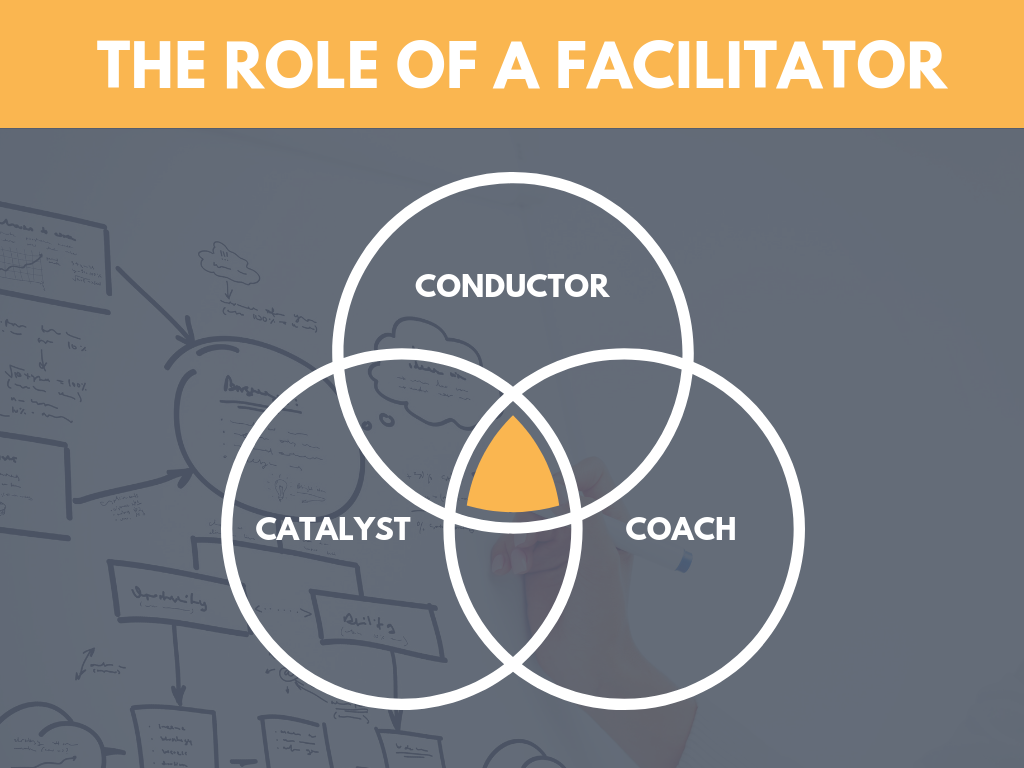Click here to view a video that explains how to be a great facilitator.
Facilitators must remember that learning occurs within everyone as a continual process throughout life. People learn at different speeds, so it is natural for them to be anxious or nervous when faced with a learning situation. Positive reinforcement by the training facilitator can enhance learning, as can proper timing of the instruction.
Learning results from stimulation of the senses. In some people, one sense is used more than others to learn or recall information. Training facilitators should present materials that stimulate as many senses as possible in order to increase their chances of teaching success.
There are four critical elements of learning that must be addressed to ensure that learners learn. These elements are:

Motivation
If the participant does not recognise the need for the information (or has been offended or intimidated), all the training facilitator's effort to assist the participant to learn will be in vain. The training facilitator must establish rapport with learners and prepare them for learning; this provides motivation.

In addition, learners need specific knowledge of their learning results (feedback). Feedback must be specific, not general. Learners must also see a reward for learning. The reward does not necessarily have to be monetary; it can simply be a demonstration of benefits to be realised from learning the material. Finally, the participant must be interested in the subject. Interest is directly related to reward. Adults must see the benefit of learning in order to motivate themselves to learn the subject.
Reinforcement
Reinforcement is a very necessary part of the teaching/learning process; through it, training facilitators encourage correct modes of behaviour and performance.
Positive reinforcement is normally used by training facilitators who are teaching learners new skills. As the name implies, positive reinforcement is "good" and reinforces "good" (or positive) behaviour.
Negative reinforcement is normally used by training facilitators teaching a new skill or new information. It is useful in trying to change modes of behaviour. The result of negative reinforcement is extinction - that is, the training facilitator uses negative reinforcement until the "bad" behaviour disappears, or it becomes extinct.
When training facilitators are trying to change behaviours (old practices), they should apply both positive and negative reinforcement.
Reinforcement should be part of the teaching-learning process to ensure correct behaviour. Training facilitators need to use it on a frequent and regular basis early in the process to help the learners retain what they have learned. Then, they should use reinforcement only to maintain consistent, positive behaviour.

Retention
Learners must retain information from workshops in order to benefit from the learning. The training facilitators' jobs are not finished until they have assisted the learner in retaining the information. For learners to retain the information taught, they must see a meaning or purpose for that information. They must also understand and be able to interpret and apply the information. This understanding includes their ability to assign the correct degree of importance to the material.
The amount of retention will be directly affected by the degree of original learning. Simply stated, if the learners did not learn the material well initially, they will not retain it well either.
Retention by the learners is directly affected by their amount of practice during the learning. Training facilitators should emphasise retention and application. After the learners demonstrate correct (desired) performance, they should be urged to practice maintaining the desired performance. Distributed practice is similar in effect to intermittent reinforcement.
Transference
Transfer of learning is the result of training - it is the ability to use the information taught in the course but in a new setting. As with reinforcement, there are two types of transfer: positive and negative.
Positive transference, like positive reinforcement, occurs when the learners uses the behaviour taught in the course.
Negative transference, again like negative reinforcement, occurs when the learners do not do what they are told not to do. This results in a positive (desired) outcome.
Click here to view a video that explains what transfer of learning means and how does it help students.
Transference is most likely to occur in the following situations:
Association - learners can associate the new information with something that they already know.
Similarity - the information is like material that learners already know; that is, it revisits a logical framework or pattern.
Degree of original learning - participant's degree of original learning was high.
Critical attribute element - the information learned contains elements that are extremely beneficial (critical) on the job.
Although adult learning is relatively new as field of study, it is just as substantial as traditional education and carries and potential for greater success. Of course, the heightened success requires a greater responsibility on the part of the teacher.
Additionally, the learners come to the course with precisely defined expectations. Unfortunately, there are barriers to their learning. The best motivators for adult learners are interest and selfish benefit. If they can be shown that the course benefits them pragmatically, they will perform better, and the benefits will be longer lasting.
